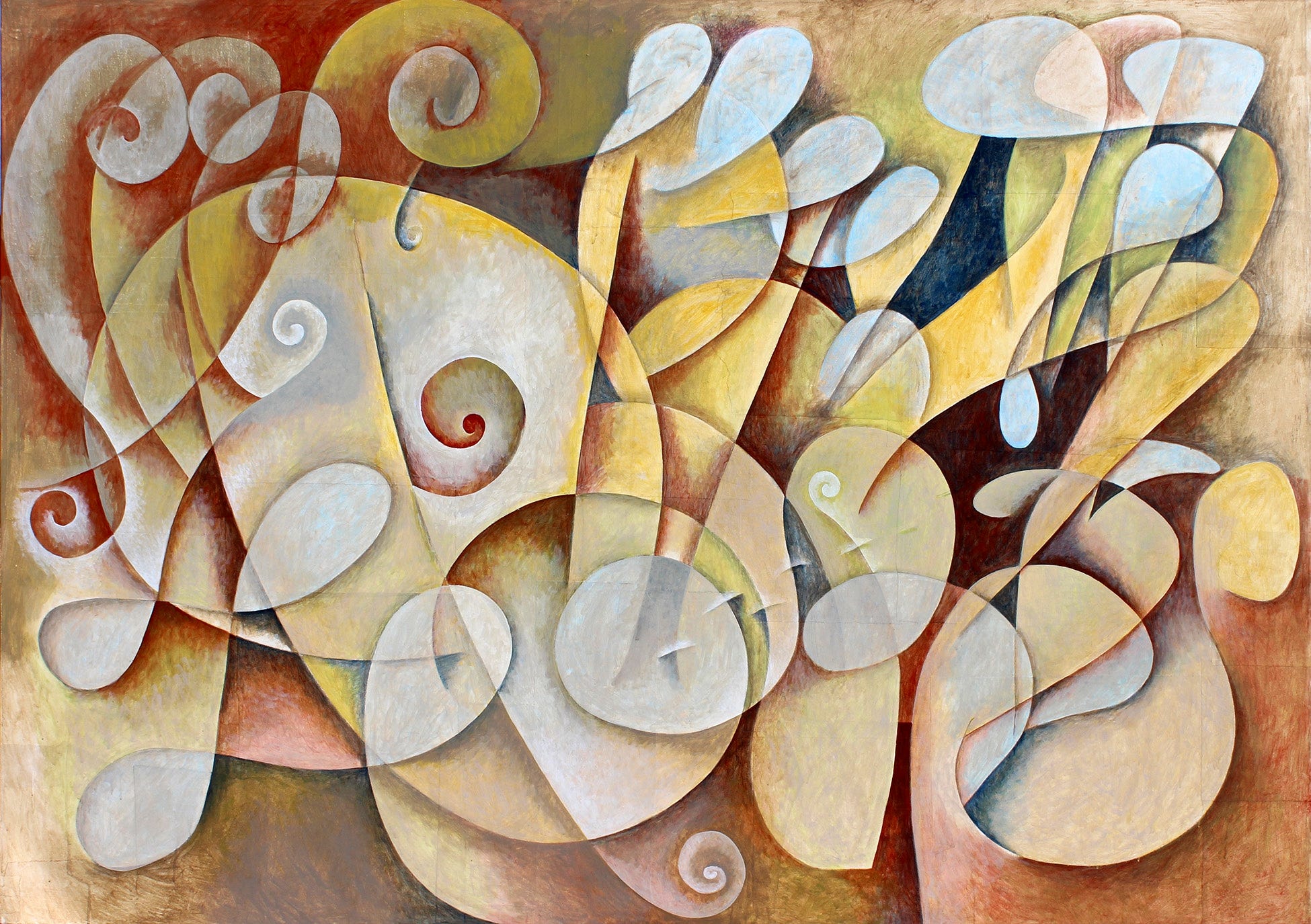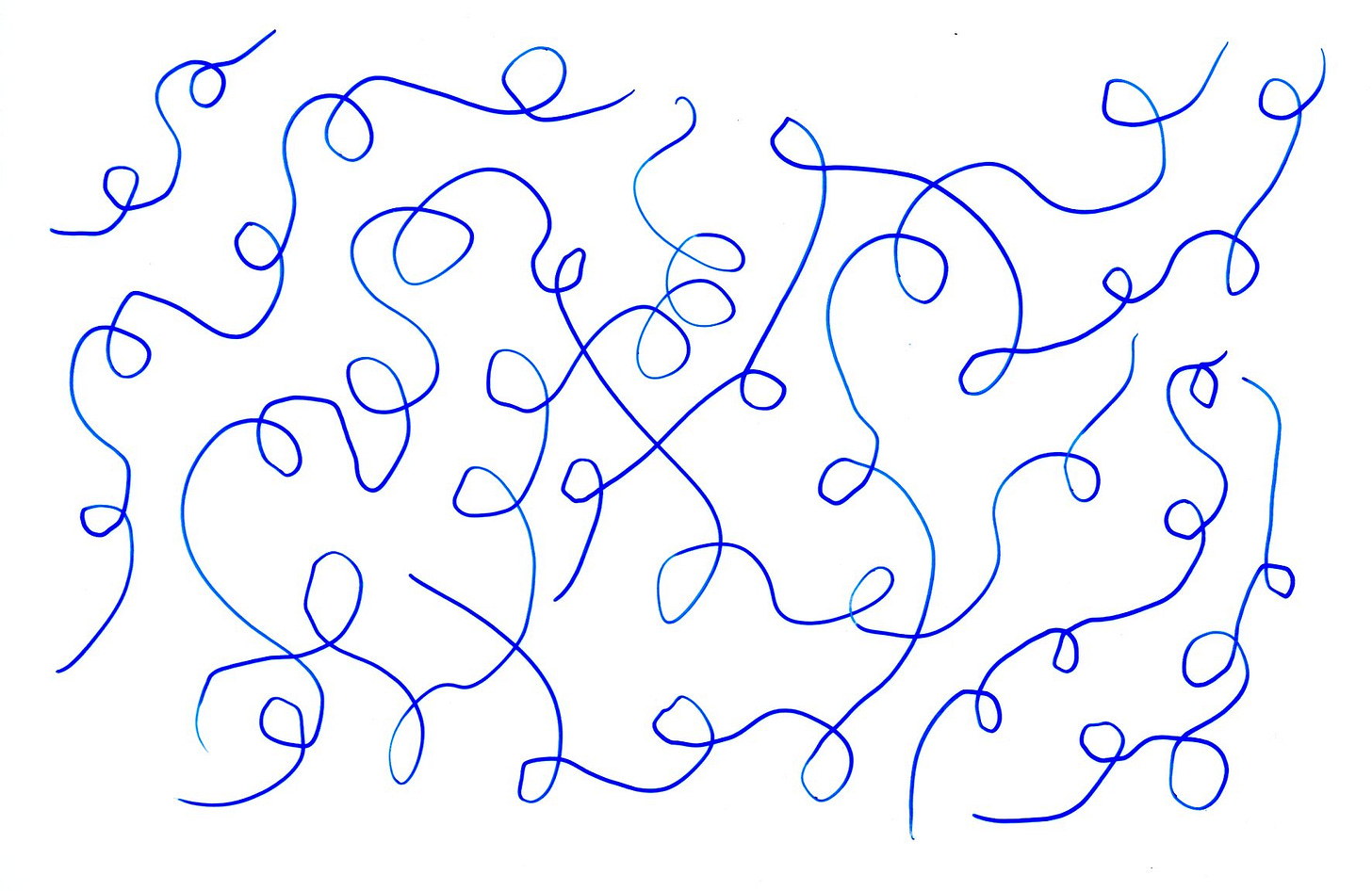Very often I will try out a visual music painting on my larger canvases to experiment and try out things and to get the hours in on the music paintings. If I get something that strikes a note that I am looking for I will keep it but usually I might just take a photo of the parts that I like for future reference and then I paint over the image to make the painting I had planned on making. This painting PDP1105CT20 is one that got painted out and later became a different musical painting PDP1138CT20.
This painting I am very happy with. I think this might lead to a few works called something like ‘The Loopity Loop Variations’. I’ll make a sketch of what I have in mind to show you in a few minutes. I am thinking about all of the musical paintings having titles that sound like titles for classical music compositions but with a twist.
Just when I finished this painting (PDP1138CT20) I heard on Pandora, for the first time, the amazing composition ‘Sweat Air’ (1999) by David Lang and I felt that it was a perfect accompaniment to this painting.
You might want to listen to this piece while studying the PDP1138CT20 at the same time and tell me if you feel the connection in the forms and movement.
https://davidlangmusic.com/music/sweet-air/
here is a fascinating performance of a different work by Lang
The So-Called Laws of Nature, by David Lang
I love the performative set up and performance for this percussion group. Personally I would have used a different deeper sounding drum set, but that’s just me.






Good post!! And today’s prompt from CreativeSprint is to respond to sounds around. At the time I read it, I was in a very low sound environment, with some ambient sound “music” playing very low. Seeing your pieces now- fitting right in. Thanks
Wonderful paintings, Cecil!
I think loops and zigzags are in our DNA! My junior high school textbooks were filled with these looping scrolls and zig zigs in the margins and I drew them endlessly. They seemed to help me concentrate and also gave me a feeling of control. Malcolm Greer, the graphic designer, taught his students how to use their whole arm, not just their wrist, in order to feel the gesture of the continuous looping lines. And there are so many ways to work with these patterns, as Josef Albers has so vividly and brilliantly done in his graphic and color studies, especially the ones that reference music.